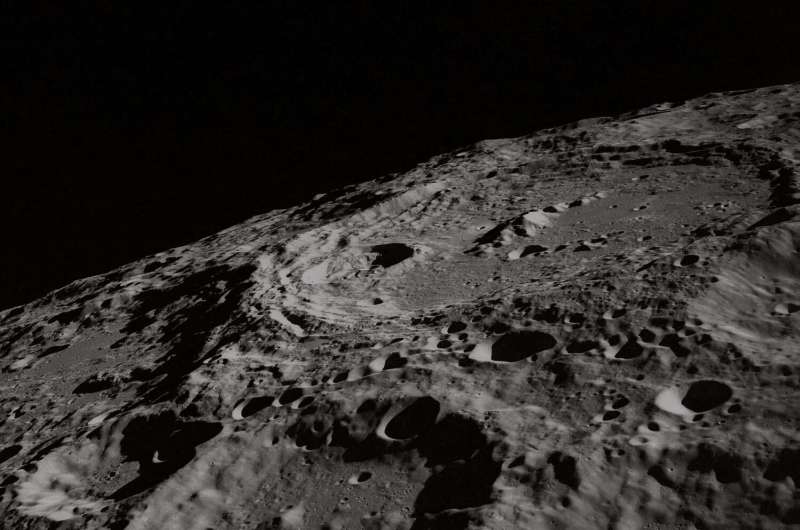Age bias exists even in outer space—in samples collected by Apollo astronauts

Because much of the evidence from Earth's early history has been destroyed by plate tectonics and weathering, astronomers often look to the moon and Mars for clues about our beginnings. But what if some of our information from those planets is biased?
When meteors crash into the moon, the impact creates so much heat that it melts the surface and spits up ejecta. Some of that melt product cools and eventually becomes shiny little orbs known as lunar glass spherules.
Ya-Huei Huang, a graduate student in earth, atmospheric and planetary sciences at Purdue University, looked to these spherules for clues about the rate of meteoroids crashing into the moon.
The samples she studied were collected by Apollo astronauts in the 1960s. Most of the spherules were relatively young, which might indicate that the rate of impacts on the moon has increased in the recent past – but Huang was skeptical of this interpretation, based on deliberations with co-author Nicolle Zellner, a researcher at Albion College.
She created a model for the formation and distribution of lunar glass spherules and found that the impact rate on the moon has likely been constant, but that the small sample of spherules collected was biased toward younger impacts. The findings were published in the journal Geophysical Research Letters.
"The astronauts used a rake to collect samples from the surface of the moon, but if they were able to take samples from a few meters deeper, we might see a more accurate age distribution," said David Minton, a professor of earth, atmospheric and planetary sciences at Purdue who oversaw the research. "If we ever go back to the moon, we could collect samples differently and actually see if the rate of impacts has changed."
Understanding the impact rate is an important part of understanding the history of life on Earth, said Minton. As you may know, impacts have caused mass extinctions (including that of the dinosaurs). Because Earth has destroyed most of the evidence of its ancient history, the moon is an important piece of this puzzle.
More information: Ya-Huei Huang et al. No Change in the Recent Lunar Impact Flux Required Based on Modeling of Impact Glass Spherule Age Distributions, Geophysical Research Letters (2018). DOI: 10.1029/2018GL077254
Journal information: Geophysical Research Letters
Provided by Purdue University





















